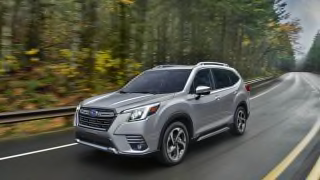Subaru Outback
Latest Model


CR Take

2025


2025 Subaru Outback

2020-Present





2015-2019





2010-2014





2005-2009





2000-2004




Auto Test Center
TESTING LIKE NOBODY ELSE
50+
tests are conducted on every car we buy.
PERFORMANCE TESTING
6
miles of track for testing acceleration, ride, handling, braking, and advanced driver assist systems.
TIRE TESTING
400
tires tested a year for all-weather grip and rolling resistance.



















